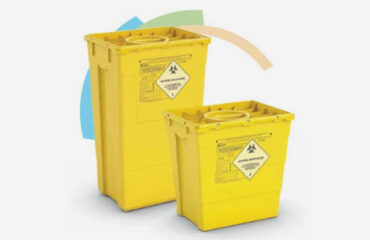Rumored Buzz on Reclaim Waste
Rumored Buzz on Reclaim Waste
Blog Article
Reclaim Waste Can Be Fun For Anyone
Table of ContentsThe Ultimate Guide To Reclaim WasteThe Main Principles Of Reclaim Waste All About Reclaim WasteReclaim Waste - TruthsSome Known Details About Reclaim Waste
Domestic sewer waste refers to the waste and products from a property septic tank. The appropriate management and disposal of domestic sewer waste require fluid waste to be moved to a sewage therapy plant where the correct techniques and tools are applied to detoxify and dispose of waste.
Industrial waste often consists of prospective risks, such as combustible materials or a mixture of fluid and strong waste products, and needs an extra advanced and in-depth disposal procedure. The disposal of commercial waste commonly involves the filtering of waste prior to transportation to ensure safe and appropriate disposal. Industrial waste is developed from byproducts and runoff of industrial procedures and manufacturing.
This kind of waste can not utilize the very same sewer management transportation or processes as septic or industrial liquids. The hazardous waste administration procedure needs the examination and screening of fluid waste before it undergoes the disposal process (liquid waste disposal). Drainage waste is the fluid waste that originates from runoff and excess stormwater in extremely inhabited locations or cities
Drainage waste can create contamination and flooding if not dealt with effectively. Find out more about drain cleansing and waste monitoring. Ensuring appropriate waste administration can stop catastrophes and minimize ecological injury. Both people in property settings and professionals in business or production markets can gain from understanding the procedures and policies of liquid waste monitoring.
The smart Trick of Reclaim Waste That Nobody is Discussing
Get in touch with PROS Services today to discover our waste administration and disposal services and the appropriate means to care for the fluid waste you produce.
(https://disqus.com/by/reclaimwaste1/about/)Do you recognize what happens to your water when you disengage, purge the commode or drain the cleaning equipment? No? Well, it's worth recognizing. This so-called 'wastewater' is not just an essential resource but, after therapy, will be launched to our land, waterways or the sea. Used water from commodes, showers, baths, cooking area sinks, laundries and commercial processes is called wastewater.

water utilized to cool machinery or tidy plant and devices). Stormwater, a form of wastewater, is drainage that flows from agricultural and metropolitan areas such as roofs, parks, gardens, roadways, paths and rain gutters right into stormwater drains, after rainfall. Stormwater moves unattended directly to regional creeks or rivers, at some point getting to the ocean.
Not known Facts About Reclaim Waste
In Queensland, many wastewater is treated at sewage treatment plants. Wastewater is delivered from domestic or commercial websites through a system of sewage systems and pump stations, known as sewerage reticulation, to a sewer therapy plant.
The Department of Natural Resources recommends city governments about handling, operating and maintaining sewerage systems and therapy plants. In unsewered areas, city governments might call for homeowners to install specific or family sewage treatment systems to deal with domestic wastewater from toilets, cooking areas, washrooms and washings. The Division of Natural Resources authorises using family systems when they are shown to be effective.
The majority of stormwater gets no treatment. In some brand-new class, treatment of some stormwater to get rid of trash, sand and gravel has actually begun making use of gross contaminant traps. Wastewater therapy happens in 4 stages: Removes strong matter. Bigger solids, such as plastics and various other items wrongly released to sewage systems, are removed when wastewater is gone through screens.
Wastewater after that flows into huge tanks where solids clear up and are removed as sludge. Grease and residue are skimmed from the surface. Utilizes little living organisms called micro-organisms to damage down and eliminate remaining dissolved wastes and great particles. Micro-organisms and wastes are integrated in the sludge. Removes nitrogen and phosphorus nutrients that can trigger algal blooms in our rivers and threaten marine life.
Rumored Buzz on Reclaim Waste
Nutrient elimination is not readily available in all sewer therapy plants due to the fact that it calls for pricey specialized tools. It is coming to be extra usual in Queensland. Clear fluid effluent created after treatment may still contain disease-causing micro-organisms. If this effluent is released right into rivers such as rivers or the sea, the micro-organisms will ultimately die out.

The majority of wastewater streams into the sewage system. Under the Act, local federal governments administer authorizations and licences for eco relevant tasks (ERAs) including wastewater releases that may have a local effect.
The Reclaim Waste Diaries
Otherwise, samples are taken for lab evaluation. Frequently lots of examinations are required to develop the levels of each of the different contaminants such as oils, hefty steels and pesticides in water. Monitoring provides valid info about water top quality and can confirm that licence conditions are being satisfied. The info gotten via surveillance provides the basis for making water quality top article decisions.
Report this page